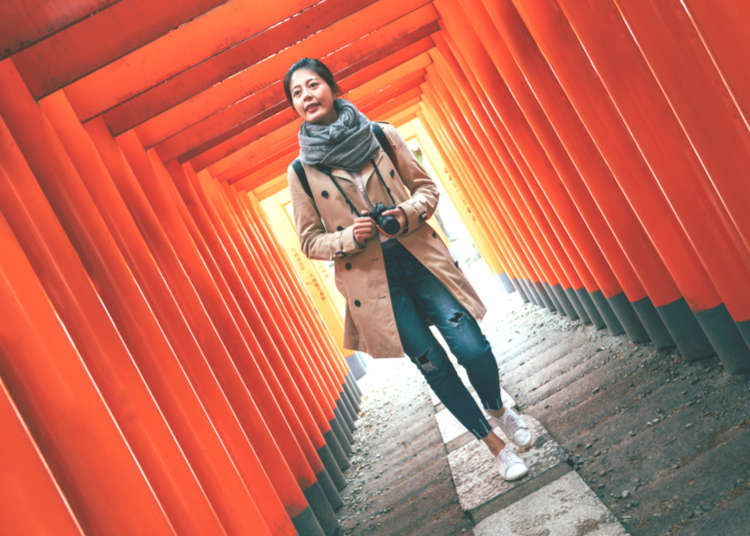
Japan 101: 13 Weird Tips and Tricks for First-Time Travelers to Japan
- Written by: Lucio Maurizi
Your first trip to Japan is finally there. You've been planning it for a while and the excitement is palpable, but you also can't help but thinking that there are a lot of things that you may not have considered.
If this sounds like you, don't worry, you're not alone! Japan is a great destination for tourists who love landscapes, culture, food, and a fun time, but it's also a country that is very different from many others and it can reserve some unexpected surprises.

You're in luck, though. We’ve compiled a list of tips for first time travelers coming to you directly from people who have already been to Japan, have been surprised or taken aback and decided to share their suggestions so that you can enjoy your vacation even more.
1. Learn a few basic words and Kanji
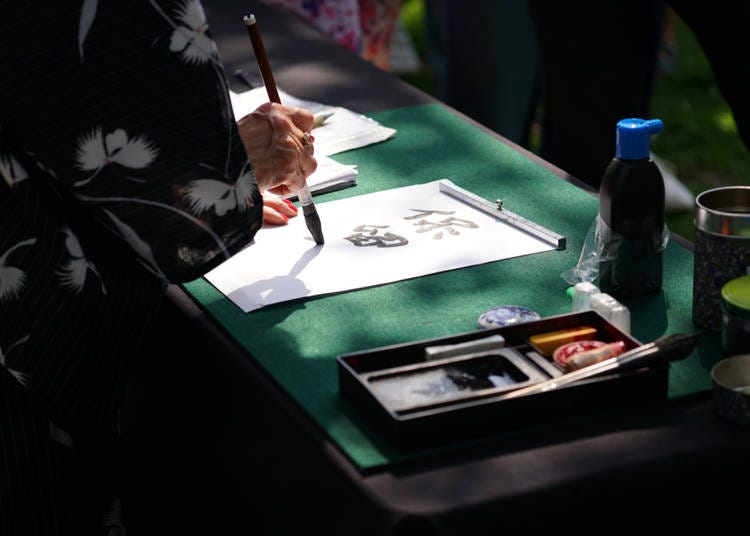
Japan as a whole is becoming more and more foreigner-friendly. Street and subway signs are both in English and Japanese, and tags on packaged food also often show both languages.
Tourism in the country is at record highs and many cities, stores, and attractions are doing their best to accommodate visitors from all over the world.
Nevertheless, this is a relatively new process. While many tourist attractions and establishments have multi-lingual support, be that a menu or the staff working on location, English is still far from being "king". For this reason, it would help you a lot to learn some basic phrases to get by while in Japan!
Here at Live Japan we have a number of articles dedicated to exactly that – they’re not nearly as hard as you might think!
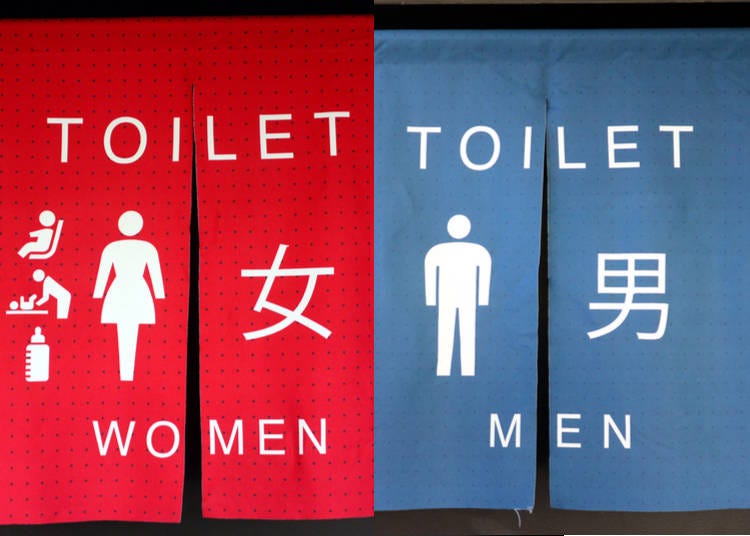
Similarly, it would help to familiarize yourself with a few basic kanji characters (Chinese characters used in Japanese language).
You don't need to become a Japanese language wiz overnight! You only need to recognize a dozen or so kanji and you can start right here to make sure you never step out of the wrong exit in one of the many massive stations in Tokyo, or end up in the wrong restroom!
・Exit – 出口 (Deguchi)
・Entrance – 入口 (Iriguchi)
・Entrance and exit -出入口 (De-iriguchi)
・Man (often seen on bathroom doors) – 男 (Otoko)
・Woman (often seen on bathroom doors) – 女 (Onna)
・Food – 食べ物 (Tabemono)
・Drinks – 飲み物 (Nomimono)
・Fixed price all you can eat menu – 食べ放題 (Tabehōdai)
・Fixed price all you can drink menu – 飲み放題 (Nomihōdai)
・North, south, east, west – 北, 南, 東, 西 (Kita, Minami, Higashi, Nishi)
・Information – 情報 (Jōhō)
2. Cash goes a long way!
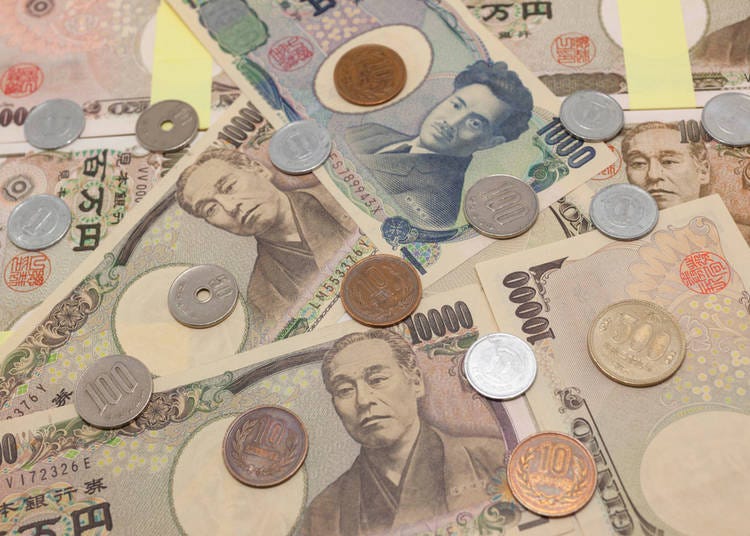
Whenever you hear or read that in Japan cash is king, it's not an understatement. Despite the country being very advanced in many aspects, there is sometimes a tendency to stick to what people know best. Cash is no exception.
You'll always be able to pay with your card in hotels, major restaurant chains and stores, and similar places. But many souvenir stores, restaurants, and even major landmarks, might not accept credit card payments, so make sure you always have enough cash on you for some spur-of-the-moment shopping!
You won't need to bring from home an excessive amount of yen, though. You'll find several international ATMs all over the place where you can easily use your credit card, debit card, or cash card to withdraw money (fees vary depending on the place, from 0 to 250 yen, not including fees your own bank might charge for the transaction)
3. Stay connected
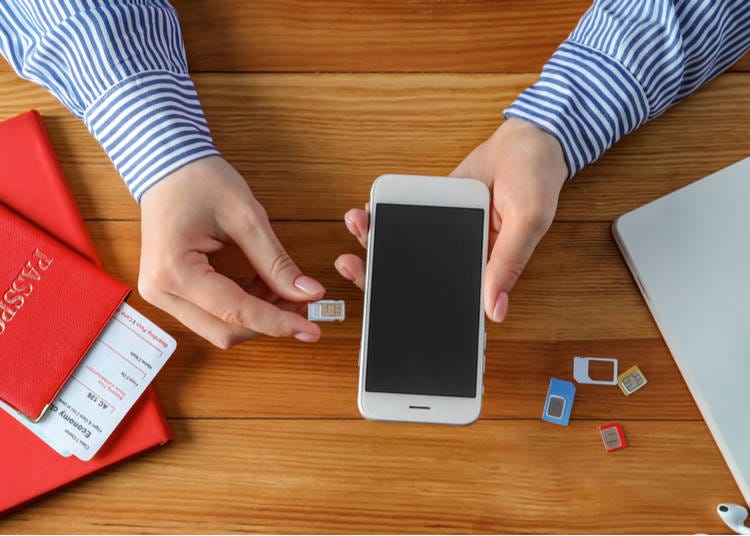
Japan now has a solid number of wi-fi hotspots, which if you don't get a SIM card or portable wi-fi router, are great ways to search for a location, or even a dish (to make sure you can eat it!), or access your English-Japanese dictionary real quick. But there will be times when you’re moving around too quickly, or need to access the internet for more than the limited access time available. So, then what do you do?
It’s best to think ahead and make sure that you have an internet plan following you around during your stay. You could perhaps get a SIM card, or even portable wi-fi which can be ordered online or at the airport when you arrive!
There are a lot of options available for all needs and budgets, so check out the details here
4. Maps are a traveler's best friend!
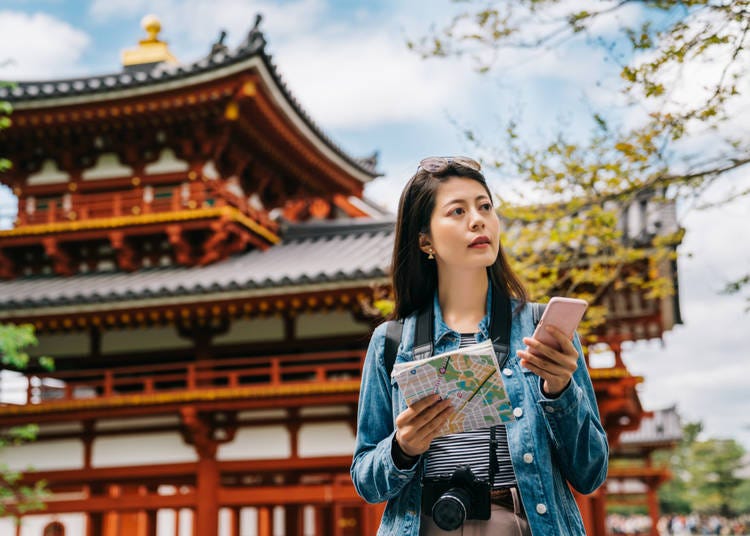
The largest cities in Japan in particular can feel like an absolute labyrinth, not only in terms of their streets, but also in their maze-like subway systems! Having a map handy will be invaluable. If you're connected to the internet, then problem solved! But if you can't for any reason, or if you want to have a backup in case your internet goes down, with a little bit of planning you'll be covered for any eventuality.
Of course, a good old-fashioned paper map, especially the type that comes with guide books is a great option, because they mark very clearly most of the popular landmarks and routes to get there. Many train stations will have both a tourist information center and carry maps of the local area.
Alternatively, you could download a Google map route to use even offline. When you're in your hotel, or anywhere you have connection, decide where you'll want to go and plan the route ahead. Then, download or save the route and you'll be all set!
5. Convenience stores – the go-to source for everything!

A conbini, or convenience store, is a store you can find almost anywhere, with many establishments running 24/7. They sell all kinds of things, from bathroom products to food and drinks. They even have alcohol, souvenirs, electronics, and more! Just when you think there’s nothing more they can offer, they surprise you with a whole host of other services: printing services and mailing services are just a few!
Most are also equipped with an ATM, though be aware that not all machines will offer international withdrawals and services.
Need a phone charger or SD card? Done. A flashlight? Done. A snack at 2 in the morning? Done! Especially in Tokyo, you’ll barely be able to take 20 steps before seeing another one! So you know the conbini always has your back.
6. Where’s best to shop?
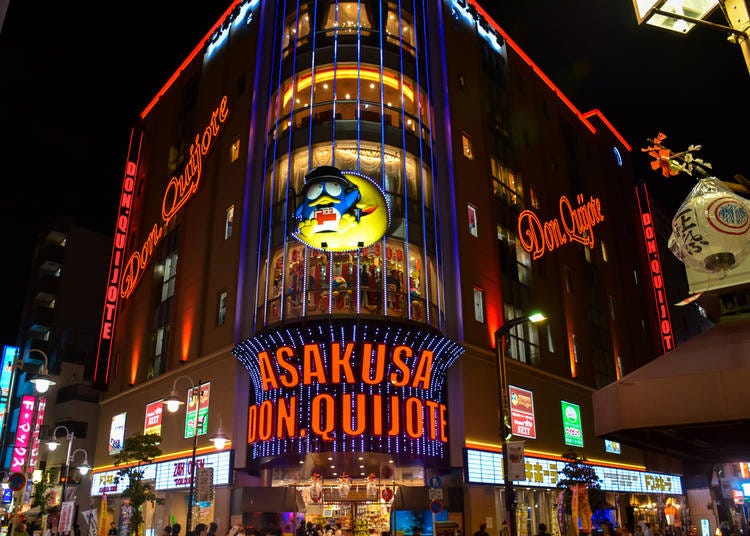
Shopping in Japan, and especially in Tokyo is fun, but can sometimes be overwhelming and even expensive. And it’s pretty likely you’ve got requests coming from left and right from friends and family as soon as they learn you'll be going to Japan! Who can blame them, right?
But everyone wants a souvenir, a snack, a kimono, a particular gadget they saw that one time on tv: “You know, that one thing? It flies, with the thing on the top? I want that!”
This of course means that you'll have to look all over the place for these things and spend half of your vacation roaming stores... Or does it?
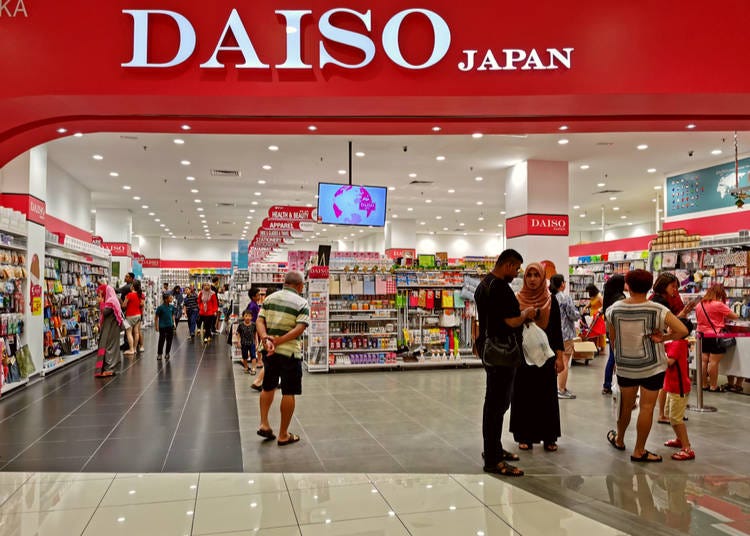
Worry not! There are so many stores that sell pretty much everything under one roof, and all at very reasonable prices. The most famous of such places is probably Don Quijote, a large Japanese chain that sells almost anything that doesn't have an engine. There are also a number of 100 yen stores scattered all over that sell a wide range of quality Japanese items. All these shops are ideal to get all your souvenir shopping done in one go, and then get on with your sightseeing (if you don’t end up shopping for yourself too!) Some of them are so large and colorful that they are worth visiting just for the experience!
7. Allergies? Dietary requirements? Make sure to plan ahead!
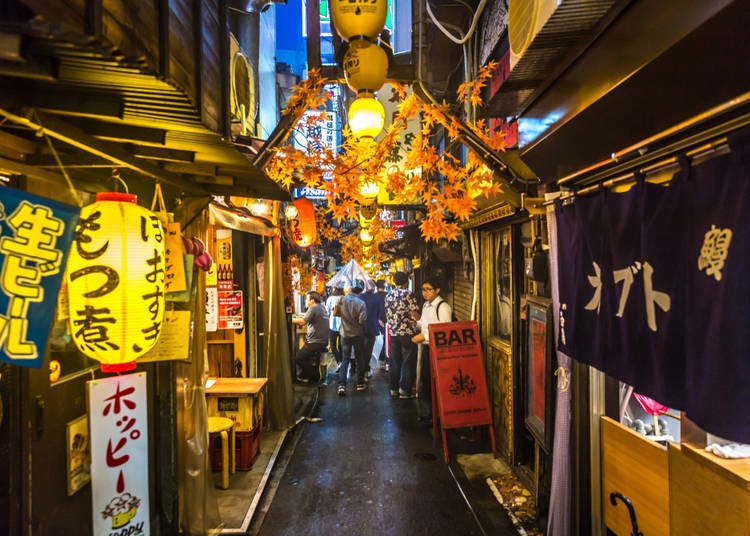
Japan is also famous for its food, and Tokyo in particular is one of the international gourmet capitals featuring food from around the world. That being said, unlike many other culinary cultures, Japanese food doesn't often bode well with changes and particular requests regarding menu items. This is at least partly because many Japanese restaurants specialize in one or two kinds of dishes, and they are prepared in a very particular way. Removing certain items from them or changing them would effectively be creating an entirely different dish.
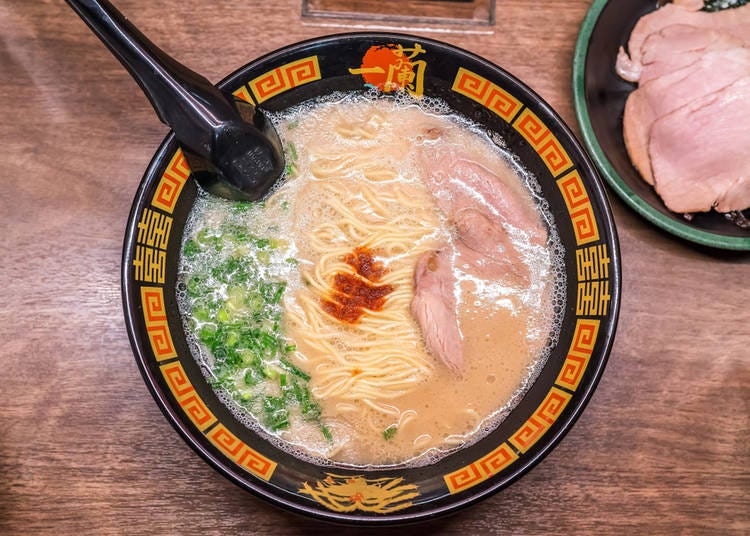
Despite the staff genuinely wanting to help, they may not be allowed or able to make any changes, particularly if the dish has pre-prepared stock. But don’t despair! You'll always be able to find many good places to eat, regardless of your preferences and dietary restrictions. All you need is a few minutes of research and you'll see that there are always a host of choices for you to pick from, especially in larger cities (vegetarian, vegan, gluten free, halal, kosher, pescatarian, organic, and more).
8. Make your commute easier
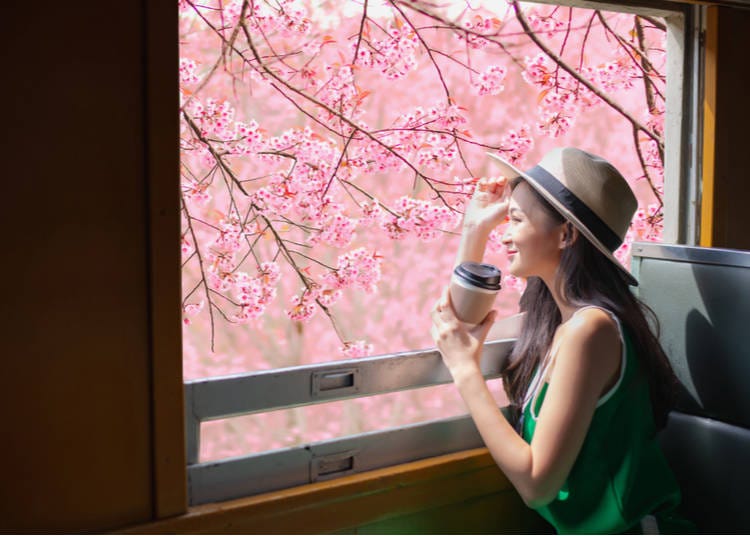
Unlike in many other countries in the world, the Japanese subway system sells tickets based on distance. In other words, if you want to go from point A to point B, you need to know beforehand how much that track is, and buy the appropriate ticket. Maps in the train stations always show how much each line is, but it can be confusing not only because of the sheer number of lines and stations, but also because often those directions are only in Japanese! Although you could familiarize yourself with the system online, it’s much less time-consuming to simply get yourself a daily pass. These don’t always cover all lines, but you can find out all you need to know about them here and here.
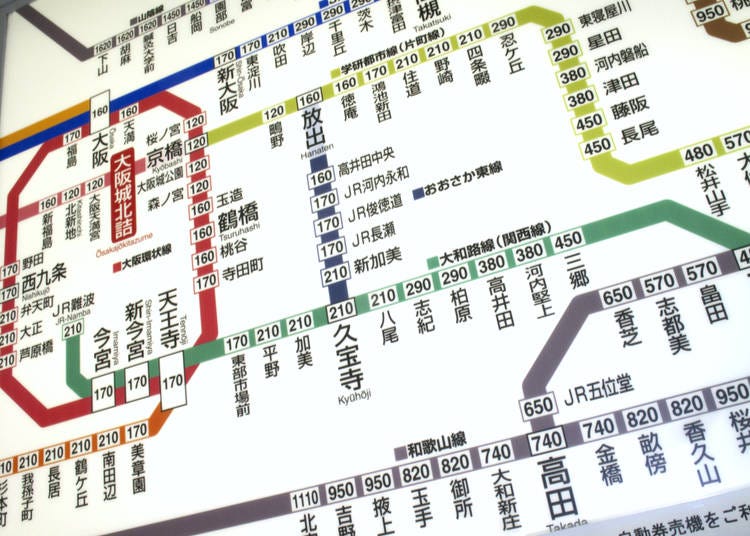
Even better, you could get yourself a SUICA or PASMO card at the beginning of your stay. These are magnetic cards that you can charge with as much money as you want to and that you will swipe as you enter one station and as you leave the next. This is what most commuters do, to make their life easier and their commute faster and hassle-free.
Some of these cards will require you to add a ¥500 deposit when you make them, but the full amount will be returned to you when you return them at any machine in any train station in Japan.
9. Know your weather
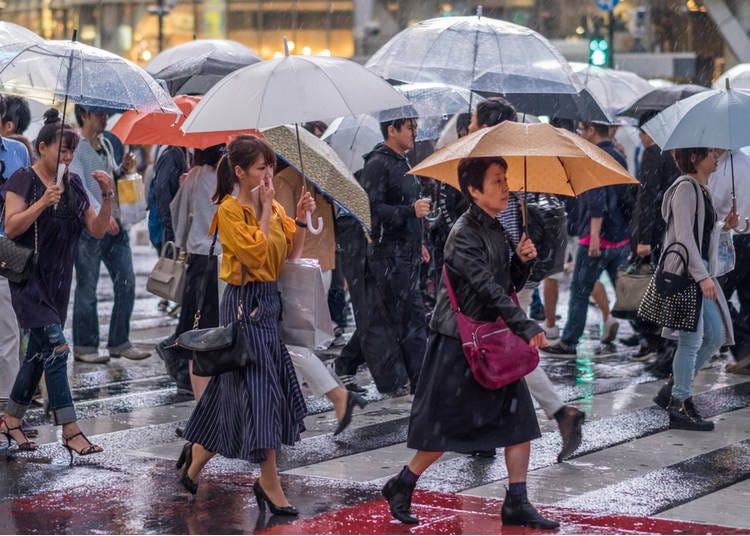
Many tourists come to Japan during summer, which makes sense considering the long vacations, but there are a few things to keep in mind no matter what season you decide to visit!
Most of the seasons in Japan are fairly straightforward. Throughout the majority of Japan, winter can be very cold, and some areas receive pretty heavy snow. Spring is characterized by a mild and pleasant weather with the ever-popular cherry blossoms, and fall is a little chilly.
Summer, on the other hand, is a bit trickier.
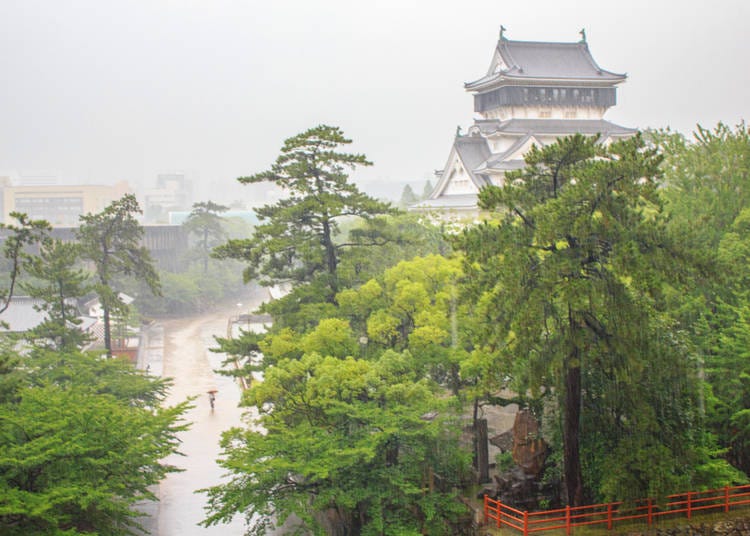
Summer is when the rainy season rolls in, generally between June and early July. As you can infer from the name, this period is when most days will see heavy rains. On top of that, usually between late August and September, is typhoon season. That's when you'll witness extremely heavy rain and winds, and, at times, emergency situations that will prevent you from even leaving the hotel. Of course, there are sunny days in between, usually around mid to late July, if you want to try and catch some rays – but remember, it can get particularly hot and humid, so be prepared with plenty of water and sun protection.
Rainy season and typhoon season change a little bit depending on where you are in Japan. Make sure to do some research prior to leaving just to know exactly what to expect and what to bring.
10. Check your medicine cabinet

Lots of medications that are very common abroad may not be allowed in Japan, or they may be restricted. Japan is very strict when it comes to controlled or banned drugs, so it's very important that first-time travelers who need certain medication do some research for their specific case. Fortunately for you we have already done the legwork for you, and here and here are two articles outlining regulations, restrictions, and all the resources you will need to make sure you can bring the medicines you need to Japan.
11. The experienced Japan traveler will tell you, choose your shoes wisely
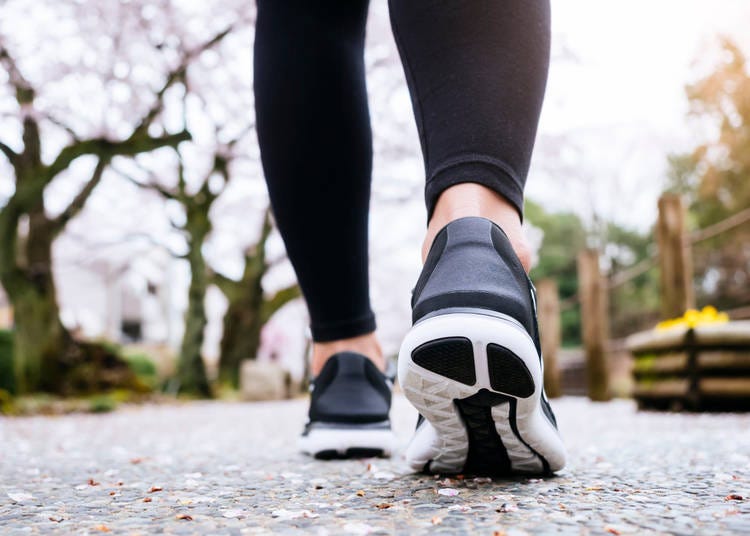
Although you’re likely to be doing a lot of walking in Japan, that could be true for pretty much anywhere else in the world. Walking shoes are not the main issue here, it’s whether or not you’ll be able to take them off easily! You may know that you shouldn’t enter private residences with your shoes on, but did you know that that is true also for many temples and other places of worship, as well as some restaurants, and even stores, museums and more?

Having comfortable shoes and socks will make the difference between being able to go sightseeing again tomorrow, and having to stay in the hotel and rest. But make also sure that you can slip in and out of those comfortable shoes seamlessly whenever you need. You'll thank us later!
12. Book ahead to avoid crowds and lines!
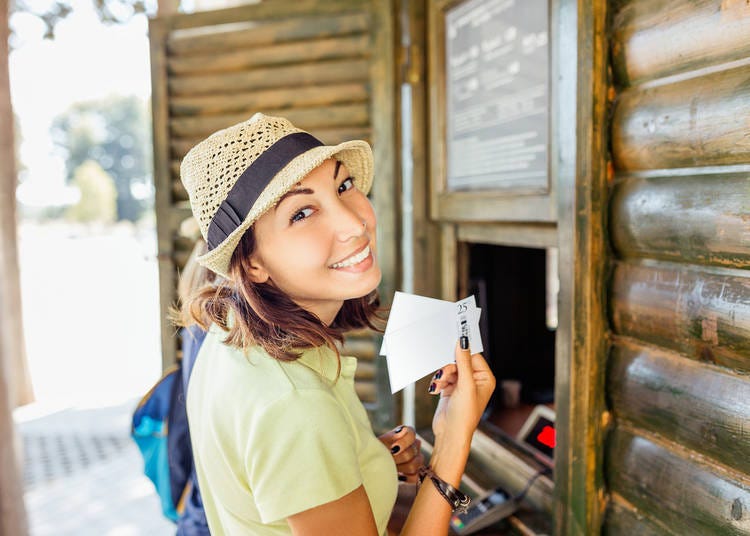
While planning your trip you probably have eyed more than just a couple of the most popular places in Japan. Some of these will be amusement parks or other entertainment venues. If that's the case, make sure that you get your ticket in advance, since some of these places (USJ, Disney Resorts, Ghibli Museum and more), especially in high season can be booked solid for a quite an extensive period of time.
13. Manage your time wisely
Most first-time travelers will want to see everything when they come to Japan. Of course everyone wants to make the most of their trip! There are so many cities, landmarks, and attractions scattered all over the territory. How can you choose!?

However, it's important that you choose a few locations that you can comfortably fit in your schedule. Although trying to see everything in one go is tempting, it’s important to know how far away everything is relatively, and how you can get there. If you want to try and see Hokkaido, Tokyo and Osaka in one day, you’re going to have a hard time! So, it’s good to know in advance what you’re setting yourself up for and being realistic with how much energy you’re likely to have. You might not be able to do absolutely everything you had dreamed of, but you’ll enjoy yourself much more. And hey, now you have an excuse to come back to Japan soon and finish what you started!
There you go! What was once unexpected might not come as a surprise to you anymore, and hopefully these few tips and tricks will help make your trip even more memorable!
Do you have more tips and to share?
Let us know!
Lucio Maurizi is an automotive expert specializing in Japan's car scene and auto-tourism. With an MA in East Asian History from La Sapienza Università di Roma, he's a multi-talented contributor to travel platforms like LIVE JAPAN, Japan Travel, and GPlus Media. His Instagram account (50k+ followers) offers insider views on Japan's automotive culture. Lucio also actively collaborates with professional drivers and influencers and organizes can't-miss car events in Tokyo.
*Prices and options mentioned are subject to change.
*Unless stated otherwise, all prices include tax.
Popular Tours & Activitiess
-

Enjoy Japan's Gorgeous Winter Lights! Ride the Romancecar to Shonan no Hoseki Illumination
by: Guest Contributor
-
Ad

Walk in the Footsteps of Believers: A 4-Day Pilgrimage Across Goto Islands, Nagasaki Prefecture
by: Yohei Kato
-

See Asakusa and Tokyo Skytree® in a New Light at the "Také Akari" Festival (Winter 2025-2026)
by: Guest Contributor
-

Get Ready to Catch 'Em All! First Ever Permanent Outdoor Pokémon Park Opening Near Tokyo!
-

Black Friday 2025: These Are THE Japan Travel & Shopping Deals to Check Out
-

LaLaport TOKYO-BAY North Building Now Open: Shop, Dine & Enjoy Events at LaLa arena, Just 2 Stops from Disney
by: Wemmy Chau
Inspiration for Accommodations
-

Enjoy Mt. Fuji from the Comfort of Your Room! Recommended Ryokan with Mt. Fuji View
-

Stay Near the Cherry Blossoms! Hotels for Cherry Blossom Viewing in Tokyo
-

Family-Friendly Hotels with Free Shuttle to Disneyland: Convenient Access for a Magical Stay
-

Top Ranked Hakone Hotels with Mt. Fuji View: Enjoy Stunning Scenery from Your Private Space
-

Convenient Tokyo Hotels with Airport Shuttle: Ideal for Families and Heavy Luggage
-

Stunning Tokyo Tower View Hotels: Enjoy Spectacular Scenery from Your Private Space
-

Convenient Asakusa Hotels with Kitchens: Ideal for Extended Family Visits
-

Experience Luxury: Hakone's 10 Best Five-Star Accommodations
-

Enjoy Mt. Fuji Autumn Leaves! Top Hotels Near the Popular Autumn Leaves Corridor
-

Experience Hakone Fall Foliage from Your Room with Stunning Views
-

Tokyo Train Map: Your Essential Guide to Subways and Railways
-

(Video) Walking Tour along Narita Omotesando - Quaint Historical Village near Narita Airport!
by: Victor Gonzalez
-
Ad

A Tokyo Souvenir with Soul: The Handcrafted Leather of Bunkoya Oozeki
-

6 Surprisingly Cheap Things in Japan
-

This Hole in The Wall Looks Like Nothing - But is Actually a Secret Door to an Incredible Japanese Pub
-

Tokyo Anime Pilgrimage: Love Live!
- #best ramen tokyo
- #what to buy in ameyoko
- #what to bring to japan
- #new years in tokyo
- #best izakaya shinjuku
- #things to do tokyo
- #japanese nail trends
- #what to do in odaiba
- #onsen tattoo friendly tokyo
- #daiso
- #best sushi ginza
- #japanese convenience store snacks
- #best yakiniku shibuya
- #japanese fashion culture
- #best japanese soft drinks



















